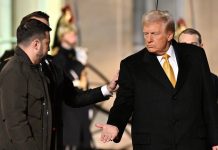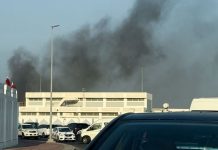MOSCOW (Reuters) – In a major development in the ongoing conflict between Russia and Ukraine, the Russian government announced that its forces had repelled a major Ukrainian-led offensive in the southern region of Donetsk. Successfully repelled. Hundreds of pro-Kyiv soldiers were killed in the clashes, according to official statements by the Russian Defense Ministry.
The motive behind the alleged attack by Ukraine remains uncertain, raising questions about whether it is the start of a months-promised Ukrainian counteroffensive aimed at areas held by Russian forces since the invasion in February 2022. is to be regained.
Russia’s Defense Ministry revealed that Ukraine launched the offensive by deploying six mechanized and two tank battalions in southern Donetsk. Moscow has long suspected that Ukraine would target the region to drive a wedge into Russian-controlled territory.
At 1:30 p.m. Moscow time (2230 GMT), the Defense Ministry issued a statement on Telegram confirming the attack. It said, “The enemy launched a massive attack on the morning of June 4 in five sectors of the front in the southern Donetsk direction. Their aim was to breach our defenses in what they considered to be the weakest sector of the front. However, the enemy failed to achieve their objectives.
Reuters news agency was unable to independently verify the Russian claims, and requests for comment from the Ukrainian Defense Ministry and the military were not returned at the time of reporting.
A cryptic tweet posted by Ukraine’s Defense Minister Oleksiy Ryzenkov on Sunday, referring to the lyrics to Depeche Mode’s song “Enjoy the Silence,” added to the intrigue surrounding the situation. “Words are so unnecessary, they can only hurt,” his tweet said.
Last week, Ukraine released a chilling video showing its soldiers preparing for battle and reciting an inspiring blessing, which later served as a recruiting tool.
In response, Russia’s Defense Ministry released a video purportedly showing Ukrainian armored vehicles being destroyed in the field after being attacked by Russian forces.
According to the Russian Defense Ministry, about 250 Ukrainian soldiers were killed, and their attack destroyed 16 tanks, three infantry fighting vehicles, and 21 armored fighting vehicles.
Importantly, Russian Chief of the General Staff Valery Gerasimov, who oversees military operations in Ukraine, was reportedly in the area at the time of the Ukrainian attack, as confirmed by the Defense Ministry.
Ukraine’s expected retaliation has been the subject of debate for months. Kiev officials and CIA Director William Burns have repeatedly emphasized their intention to destroy Russian President Vladimir Putin’s trust.
In an interview published by The Wall Street Journal on Saturday, Ukrainian President Volodymyr Zelensky confirmed his readiness to launch retaliation. However, he warned that the operation could be lengthy and costly. “I don’t know how long it’s going to take. To be honest, it could go a lot of different ways, a lot of different ways. But we’re going to do it, and we’re ready,” Zielinski said.
The outcome of the Ukrainian retaliation is expected to affect the level of diplomatic and military assistance that Western countries will provide to Ukraine. The success or failure of the operation, along with Ukraine’s request for significant Western weapons, will shape the future dynamics of the conflict.
Although Ukraine has been covertly targeting Russian targets in recent weeks, its exact plans remain unknown, as it seeks to deal a significant blow to Russia’s superior military capabilities.
Recent events have added to the tension in the conflict. Moscow reported a drone strike last month, which it attributed to Ukrainian terrorists, while pro-Ukraine forces have crossed into Russian territory several times in the past few days in the Belgorod region.
After a two-month hiatus, Russia stepped up its attack on Ukraine in early May, launching a barrage of drones and missiles aimed primarily at Kiev. Ukrainian authorities have accused Russia of attacking military and critical infrastructure.
The conflict between Russia and Ukraine began when Putin sent troops into Ukraine on February 24 last year. Initially expecting a swift operation, Kremlin forces suffered a series of defeats and were forced to retreat into eastern Ukraine.
Currently, Russia owns at least 18 percent of what is internationally recognized as Ukrainian territory and has claimed four Ukrainian regions as Russian territory.
With tens of thousands of Russian troops stationed along a 600-mile (1,000 km) frontline, Ukraine’s retaliation is expected to target Russia’s land bridge to the Crimean peninsula.






